Chubushnik pruning: types and schemes

Chubushnik, or "garden jasmine", can become an adornment of any garden plot, but only if you provide it with regular and proper care. Pruning is an important part of the process, since without it, a neat shrub quickly turns into dense thickets with difficult flowering. In addition, the lack of a haircut leads to the development of diseases or even the appearance of pests attracted by excess moisture and lack of lighting. The pruning procedure is carried out both in the spring and in the summer, in the fall.
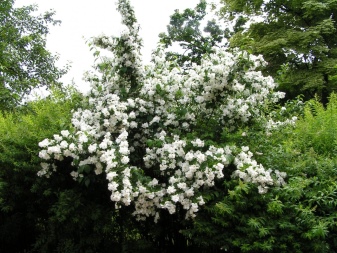
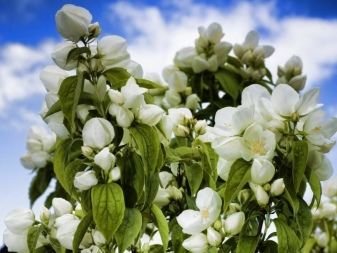
Why prune?
Chubushnik pruning is an integral part of crop care. It is mainly carried out due to the fact that, without formation, the "garden jasmine" rather quickly transforms into an overgrown and sloppy shrub, which quickly loses all its aesthetic appeal. Just the same in the spring it must be trimmed precisely to correct the shape. However, the aesthetic component is not the only reason. Properly shortening even healthy branches allows for the further development of a lush bush, which is especially important when growing a hedge or an exquisite landscape composition.
Sanitary pruning is carried out at about the same time. Its meaning is somewhat different - the removal of old, dried, damaged or frozen branches. In the spring, their presence is quite clearly traced, and therefore it becomes convenient to carry out processing. Often, sanitary pruning is combined with anti-aging, which, however, is not carried out every spring, but only once every three years. Its purpose is to free the shrub from non-flowering or old branches, as well as to carry out thinning.
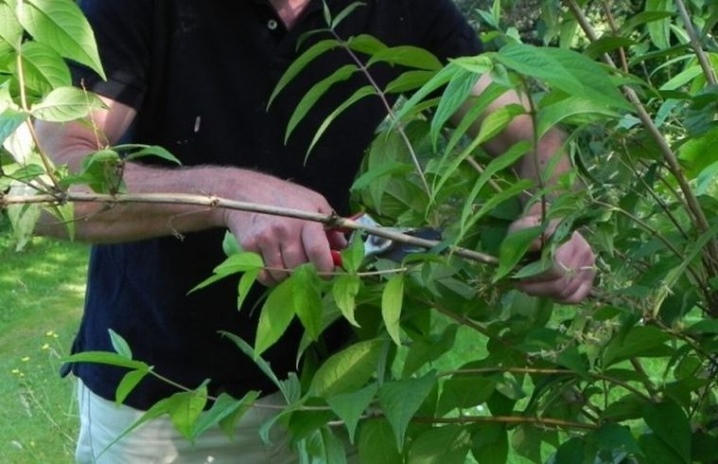
In other words, pruning "garden jasmine" in spring is necessary in order to stimulate the development of young shoots and guarantee flowering. On old branches, buds are poorly formed, as a result, a much smaller number of buds grow. The same happens when the plantings are thickened, since, firstly, light does not penetrate well, and secondly, the shrub spends effort and nutrients on the development of thickets, and not the formation of flowers. Without correction, the chubushnik will quickly look one-sided, and its height will reach almost 2.5 meters. Finally, it is impossible to implement original landscape design projects without a haircut.
Quite often, pruning after flowering is also carried out for a chubushnik, which makes it possible to give a plant with faded buds a neat appearance. In summer, thinning is also carried out if necessary.

Timing
The timing of the pruning is determined by its purpose. It is necessary in this way to choose the timing to cause minimal damage to the plant. For example, sanitary mowing is carried out to eliminate frozen, broken or dried branches... It is better to do this in the spring - before the active growth of the mock-orange begins. The shrub must be cut before the buds open and the juices begin to move.
Forming and thinning pruning can be done in both spring and summer. Summer treatment should only begin after flowering. The main task is to eliminate unnecessary shoots, thinning thickened shoots, as well as the destruction of small faded branches. Rejuvenating pruning is carried out either in the fall, when leaf fall ends, or in the spring along with sanitary pruning. The main goal of rejuvenation is the gradual replacement of the old "skeleton" with young ones.

Spring pruning begins in mid-March. Summer must be done before the end of July. For the winter, the plant can be cut almost completely, leaving a stump, and then a young and strong bush will form in the spring.
By the way, the first pruning of "garden jasmine" is carried out immediately after planting the plant, and it doesn't even matter if it happened in spring or autumn... In this case, those shoots that grow incorrectly or ugly are immediately eliminated, destroying the harmonious outlines. No more than three trunks with already formed buds should be left for the first time.
If you do everything right, then the next year the mock-orange will have an active flowering.

Pruning schemes
To trim your garden jasmine properly requires not only guessing the timing, but also choosing the proper pruning scheme. It should be immediately indicated that it is better to carry out the procedure with the help of a well-sharpened professional pruner, additionally disinfected. A blunt instrument can ruin the scions. The resulting wounds are treated with garden varnish, wood ash or similar.
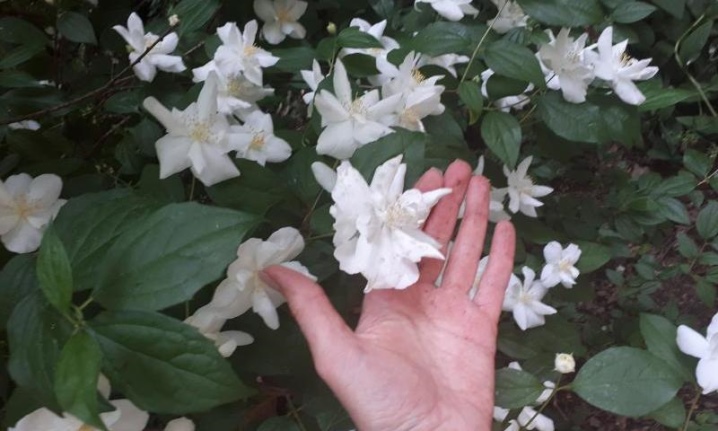
Formative
Crown formation not only creates a neat shrub appearance, but also improves flowering and achieves symmetry. As a rule, strong and well-formed branches are lightly pruned, but weak and thin branches are removed more than half. By the way, a shaping haircut, if necessary, can occur throughout the season. As a rule, the reason for it is the asymmetry of the growth of the chubushnik, its excessive stretching in height or its thickening. The treatment scheme is as follows: half of the fast-growing shoots on the bush are completely eliminated to stimulate the lateral stems.
Old branches are also removed, however, as those that grow inward, worsening the density. Finally, the large and elongated processes are simply shortened to give the chubushnik more symmetrical shapes. As soon as the gardener masters the simplest formative pruning, you can try to create a geometric figure - for example, make a shrub in the form of a ball, which looks very beautiful. The transformation into a spherical shape begins with the fact that the young seedling is shortened almost to the base.
The next year, all emerging shoots are examined, and those that grow inharmoniously are removed from them.

After waiting for flowering, the branches are cut to the young growths located below, so that the flowers later appear on the side short shoots. In addition, a sanitary haircut is required, and those branches that violate the intended shape are cut off.
Mention should also be made of the need for formative pruning while the “garden jasmine” is still young. The essence of such a haircut is to shorten the trunks, and all those that are located inside, "build up" on top of each other or otherwise interfere with each other, are completely eliminated. As a result, there may be five or ten trunks left, which is determined depending on the width of the base of the chubushnik. The main thing is that between individual copies there is such an amount of free space that it is possible to cut down any of them without damaging the rest. In this case, the replacement of old barrels with new ones will be carried out consistently and without any difficulties.
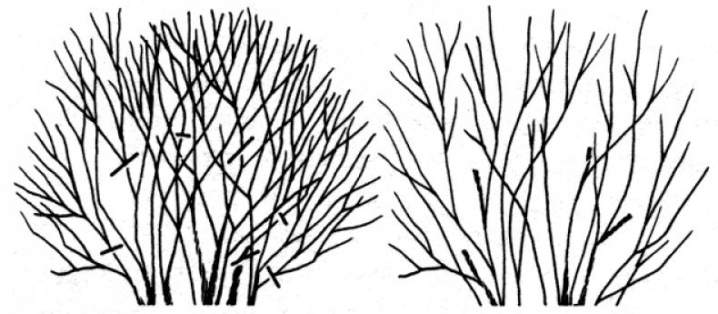
Sanitary
Sanitary pruning helps prevent fungus and pests, so it's important to do it in the spring. Everything happens as follows: first, those branches are removed that died from frost or broke from snow and blizzards. In principle, there is no need for their complete cutting - you can simply shorten the shoots to the existing living bud, which, as a result, will contribute to the development of lateral shoots. If there is no such kidney, then, of course, you will have to remove everything completely.Next, the density of the shrub is checked, those shoots that grow either sideways or inside the chubushnik are removed. Those shoots that develop too close to each other, as well as those that do not grow properly or look very weak, are also subject to removal.
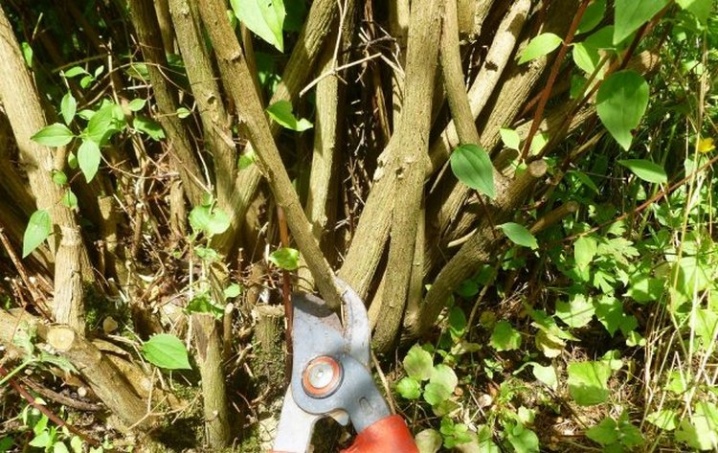
After flowering
The tops of an overly elongated shrub in the spring are not eliminated - their removal must be postponed to the summer, when the culture has already faded. In addition, a number of procedures are underway. If you do not delay further the end of July, it will be possible to remove the ovaries in time, which means that you can save the chubushnik from the laborious process of seed formation, and also free the plant from unnecessary growth. The cutting scheme is as follows: first, the tops of the already faded branches are cut off, after which the old stems are removed, the age of which has exceeded 6-7 years. Further, all the weak growth that forms at the base of the shrub is eliminated, and, finally, the crown is thinned out. As in spring, branches are cut that grow in the wrong direction, interfere with each other, are weakened or bent.
However, in this case, it is better to leave lateral young shoots.
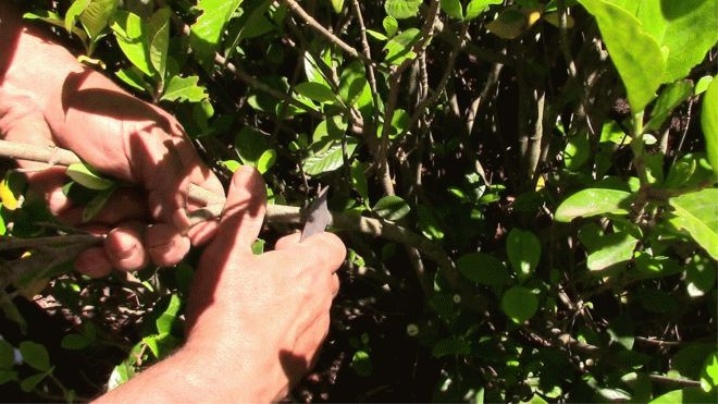
Rejuvenating
Anti-aging pruning can be done in both spring and fall. If the bush is extremely old and neglected, then you can even do a radical way - cut everything off and leave a stump. In spring, such a mock-orange will begin to grow from the root and thus will recover in two years. Another way is to prune a couple of old branches to the largest lateral branch, or to completely eliminate them. However, the same number of shoots from a young zero growth should remain. Repeating this operation the next year, after some time, you can completely replace the skeletal base.
Spring rejuvenating pruning is done in a slightly different way. First, the 4–5 youngest shoots are shortened so that only 40 centimeters remain, starting from the base. At the same time, all remaining branches are completely cut off, and the wounds are carefully processed with a special pitch. The surface at the trunk is immediately mulched using compost.
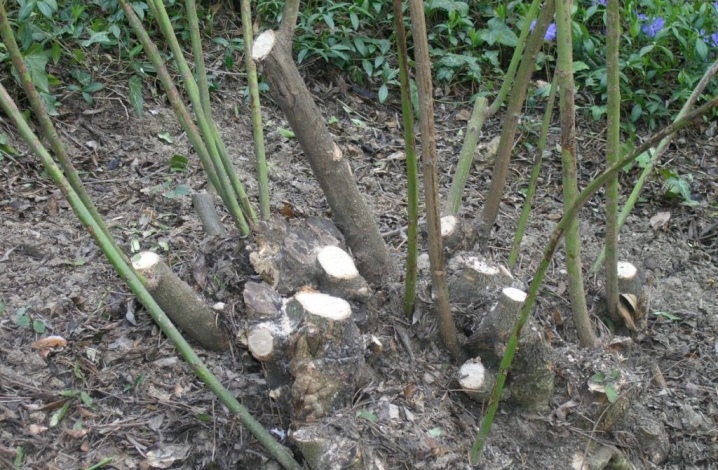
Follow-up care
After a haircut, we must not forget about proper care of the "garden jasmine". If the pruning was spring, then every ten days he needs to make mineral complexes containing potassium and phosphorus, accompanying feeding with abundant irrigation. A couple of times, mineral fertilizers are allowed to be replaced with organic ones. For example, a slurry diluted in water so that 10 parts of water fall on a part of the substance. Organic matter should enter the ground no earlier than 10–12 days after pruning. In addition, the trunk circle must be mulched with materials such as sawdust, dry foliage or peat.


For information on how to cut a mock-orange, see the next video.



































































The comment was sent successfully.